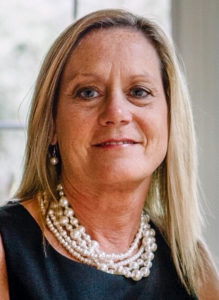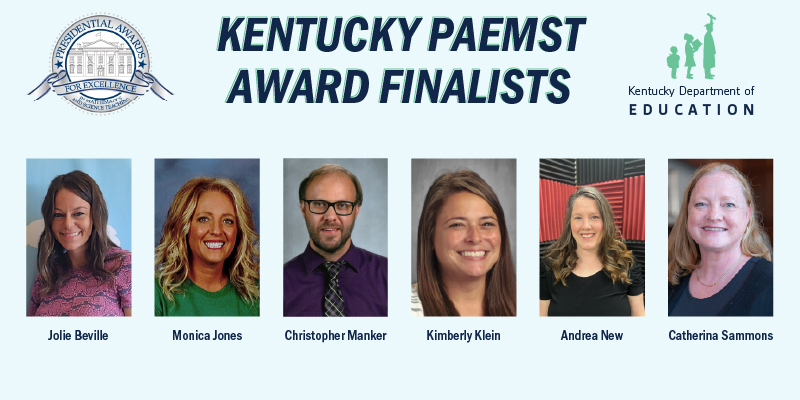
Terry Rhodes
By Terry Rhodes
terryrhodes1science@gmail.com
As the end of June drew near, we – the Kentucky Department of Education field content specialists and consultants – brought to a close three years of collaboration and networking with teacher leaders across the state as part of the Science Teacher Leader Network.
To say that these years have been a time of productive struggle would be a slight understatement. But together we waded into the waters of change, determined to come out at the other side with a deeper understanding of three-dimensional science instruction and assessment.
Looking back, year one of the Science Teacher Leader Networks (STLN) was probably the most frustrating for all involved. Teacher leaders were encouraged to dig into a set of science standards – also known as performance expectations – unlike any they had seen before, knowing that there was not going to be a simple cookie-cutter approach for deconstructing them. The first three meetings of the STLN were spent answering an often-asked question, “Why can’t KDE just deconstruct these standards and give them to us?”
As teacher leaders began the arduous task of figuring out the best way to get to the intent of the performance expectations, they began to see the wisdom behind the decision to leave it to teachers. The only way to truly understand what is being asked of students to “know and do” is to “know and do” ourselves. Once that realization was made, the tide turned and teacher leaders began to own the work.
That first year uncovered a huge learning curve for both teacher leaders and the KDE facilitation teams, as everyone began looking at science education through a completely different lens than in previous years. No longer was it OK to tell students about science. Now students were asking the questions in order to find out how and why!
As year one came to an end, finally there was a growing understanding of the new vision for science education. A farewell was said to the implementation of lessons heavy on content and light on process, and hello to designing student-centered learning experiences.
Year two greeted the teacher leaders with a challenge to design lessons and experiences that were three dimensional, engaging students in science and engineering practices and crosscutting concepts in order to make sense of science content. A modified intent protocol was shared as a tool to assist teacher leaders as they worked to understand what each of the performance expectations was asking of the students.
Teacher leaders were introduced to a Gathering, Reasoning and Communicating (GRC) planning tool that proved useful for ensuring that lesson experiences had students engaging in the sense-making practices rather than the teacher sharing their understanding of science core ideas. Much time was spent learning about a balanced assessment system, emphasizing that formative assessment is seamlessly embedded in instruction, not used as a “stop, drop and test” routine.
As year two closed, teacher leaders and KDE staff began to share ideas on how to get students to use the three dimensions of the standards when explaining a natural or man-made phenomenon. Teachers left for the summer armed with a plethora of tools to be used as they developed meaningful instruction and assessment for the upcoming year.
Year three was infused with a sense of urgency as teacher leaders not only focused on the science standards, but also on building capacity in their districts to continue to support ongoing science work. A laser-like focus was placed creating on effective professional learning communities (PLCs) and understanding how these PLCs could drive instructional shifts in science throughout a school.
Evidence Statement Templates (see www.nextgenscience.org) were introduced as another resource to use when building three-dimensional experiences for students and rubrics that aligned to each of the three dimensions were created. Teacher leaders implemented the learning experiences they created together, then brought back student work to analyze congruence to the intent of the standards. Meetings were filled with productive conversation, as teacher leaders used protocols to look at student work, identifying areas for growth and offering modifications to improve the quality and fidelity of the learning experiences.
At the close of the final year of the STLNs, teacher leaders were asked to reflect on their experiences and how their instructional practice had changed. The responses we received were honest and deeply self-reflective. The following are just a few of the responses that provide evidence of the success of the networks:
- I’ve improved my practice by breaking down the standards into measurable and student-friendly learning targets
- My teaching strategies have evolved and I am a stronger teacher.
- My lessons/units have become more vertical, attempting to build from lesson to lesson. I’m not just building academic knowledge, but building skills for students to improve upon.
- I am facilitating real thinking! Kids are working harder than I am these days!
- I now pay more attention to rigor and allow my students to think rather than comply.
- My instruction has become less traditional and more student-directed.
- My students now have more choice because I allow them to develop their own questions and guide their own learning.
- I have truly increased my thinking on connecting instruction to standards and what is being assessed.
- I have learned to use formative assessments in a more relative and authentic manner.
The foundation has been established for the vision of the new science standards to move forward. District and building administrators take notice, your teacher leaders are on a mission – seamless, rich, three-dimensional science instruction from kindergarten to 12th grade.
A great team of science teacher leaders has invested a lot of time and energy over the past three years in order better understand best practices in science education. Their enthusiasm and growing expertise will be invaluable to districts as they strive to influence positive change and shifts in how science is taught.
Thanks to each of you for your dedication and passion for science education! Best wishes, teacher leaders!
Terry Rhodes taught for 17 years in the Montgomery County School District and spent the past three years as a science instructional specialist for KDE, working with the Central Kentucky Educational Cooperative. A National Board certified teacher, she just finished her term as a governor-appointed member of School Curriculum Assessment and Accountability Council and president of the board of directors for the Kentucky Association for Academic Competition (Governor’s Cup). She retired in June and moved to Georgia, where she will continue working with science educators as an instructional consultant.




Excellent recap of what we have learned over the past 3 years. I am proud to have had this opportunity and to share it with the elementary educators in my district. Can’t wait to see the assessment components put in place.
WKEC